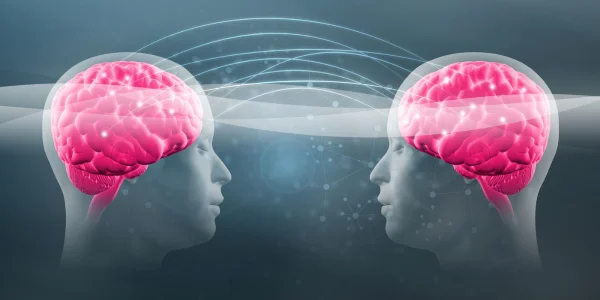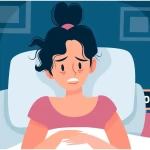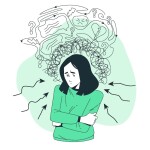Addiction is more than just a personal struggle. It can ripple through social groups, impacting family dynamics, friendships, and entire communities. Whether it’s substance use, like alcohol and drugs, or behavioral addictions, such as gaming or social media overuse, the behaviors often seem to spread. But what drives this phenomenon?
One intriguing explanation comes from the field of neuroscience: mirror neurons. Discovered in the 1990s, these neurons help explain how we empathize and imitate others. Could these tiny cells in our brains hold the key to understanding how addiction spreads and how it might be treated?
In this blog, we will explore how mirror neurons, generally dubbed the neurological basis for empathy and imitation, might contribute to addictive behaviors. We’ll dive into their discovery, their role in substance use and behavioral addictions, and the exciting implications for addiction recovery. By understanding how our brains are wired to reflect the actions of those around us, we can shed new light on the social nature of addiction and develop more effective strategies for intervention and recovery.
Mirror Neurons: An Overview
Mirror neurons were first discovered by Giacomo Rizzolatti and his team in the early 1990s while observing monkeys. They found that certain neurons did not fire when a monkey was performing an action, such as grabbing something, but also when the money was simply watching another monkey perform the same action. These neurons, known as mirror neurons, seem to mirror within the brain the actions of others, thus linking observation with action.
The same case applies to humans. These cells activate when we perform an activity and when we see someone else doing something. It has been vital to understand not only what a person is doing but also why they are doing something and what it may mean to them. For example, if someone smiles, the mirror neurons facilitate the experience of that smile inside you, making you empathize with the person.
The ability to reflect behavior and emotions to others is at the heart of social learning, how we acquire new behavior through observation. It also lies at the heart of imitation, itself a powerful force in human development, enabling us to acquire complex skills and social norms. Yet, as we shall see, it may also make us vulnerable to taking on bad behaviors, including those that fuel addiction.
Neurology Connection Between Mirror Neurons and Addiction
Another area where mirror neurons are crucial to our ability to learn through observation relates to addictive behavior. Addiction seldom starts in a vacuum; it usually begins within a social context. Whether it is a teenager who tries their first cigarette because they saw one of their classmates do it or someone who develops a gambling habit after seeing others win big money, much of what we do is influenced by what we see.
This imitation process can be explained by social learning theory. When individuals watch others who are engaging in some kind of addictive behavior, whether that be through a peer group, family member, or some media portrayal, the mirror neurons in their heads fire and simulate that behavior in their brains. That can then activate the brain’s reward pathways if it’s something the individual perceives as pleasurable or social. For example, when one sees a person elated while consuming a beverage, the same neural pathways can be stimulated in an observer, who may become motivated to experience the same feeling.
Along with this, another area where mirror neurons are crucial to our ability to learn through observation relates. Such a process does not apply only to substance addiction. Behavioral addictions, such as excessive use of social media, gaming, or shopping– also involve the activation of mirror neurons. When we see others having fun with such activities, our brains, weird into imitation, begin to imitate them. The more often we see such things, the more likely we are to adopt them and the easier it may be for us to engage in such behaviors over time in environments where they are normalized.
Mirror Neurons and Substance Use Disorders
Substance use disorders demonstrate how addiction can be gained by social observation. At this stage of development, teens tend to be vulnerable to peer influences due to the increased attachment established in the brain to social relationships. When teens witness their friends or family members using substances like alcohol, nicotine, or drugs, the mirror neurons are activated in their brains, and they can copy such behaviors. Over time, they often try it out, and for some, it leads to addiction.
The social contagion effect helps explain why behaviors spread through a group like viruses: substance use often prevails in particular social circles or communities. Suppose one member of an intimate community begins using a substance. In that case, others are likely to follow, for reasons as much to do with the pressure imposed by peer groups as with the brain’s design to imitate what it is seeing. The normalization of substance use within these groups makes it hard to resist, especially when the mirror neuron systems are reacting very sensitively in those whose cases get underway.
Some people are more than vulnerable to addiction because the actions of other people easily trigger their mirror neurons. People who are more sensitive to social cues are more prone to addictions. They mirror whatever action they see in their environment. Such a phenomenon may explain why some people are more vulnerable than others to certain substances, even if they are subjected to the same environment.
Mirror Neurons in Behavioral Addictions
Behavioral addictions like social media, gaming, and shopping also possess behaviors that mirror neurons can explain. Consider the example of social media addiction for a start. Scroll through your social media account, and you are constantly looking at what other people go to parties for, what exercise programs they do, and even what type of shopping spree others have on whom they spend. Every picture you see activates your mirror neurons so that you can imitate and indulge in the behavior you see. This could lead to compulsive behavior, such as excessive scrolling or comparing oneself endlessly to others, which continues the feelings of inadequacy or encourages the imitation of unhealthy behaviors.
Gaming addiction also has a social component that activates one's mirror neuron system. Most people get addicted to gaming not because of the game but because of the friends it comes with. Watching others play—the person in the room or through streaming platforms like Twitch—can activate the same neural circuits as playing the game. This can create a powerful urge to join in, especially if the game is socially rewarding, with prestige or recognition within a gaming community.
Even more everyday behaviors, such as eating or shopping, turn into addictions when leavened by social observation. Desires are entire when indulged in by watching others do it in person or on television through the activation of mirror neurons. You feel hungry when you see someone enjoy his meal, even if you weren't before, and find yourself wanting to buy things you don't need after watching a video on someone's haul.
Mirror Neurons and Recovery from Addiction
The exact mechanism that feeds addiction, social learning via mirror neurons, can also be used to feed recovery. Group therapy, for instance, can have a very powerful impact on the treatment of addiction because it gives individuals environments in which to model healthy behaviors. As someone in recovery narrates their experiences and maneuvers at overcoming their addiction, others around them can view and copy that behavior. The mirror neurons will thus be activated in a manner that helps towards recovery.
Peer support and empathy also form an essential part of this journey towards recovery. The mirror neurons help to conceptualize and feel what others are going through. Thus, peer support groups are very productive in creating a sense of empathy and mutual understanding in people recovering from addiction by sharing their drawbacks and success stories.
Addictions could also be treated with the influence of social learning by interventions such as Cognitive Behavioral Therapy. This would make someone cognizant and change these maladaptive thought patterns that can block the relief brought about by addiction. It would, therefore, short-circuit the automatic imitative behaviors caused by mirror neurons. This would multiply in each group therapy session, where everyone can learn from each other's successes and failures.
Future Research and Implications
In the future, research will help in understanding how mirror neurons relate particularly to kinds of addiction and why some are more susceptible to the disorder. This knowledge could pave the way for new treatments and interventions.
For example, virtual reality could be designed to guide a patient in practicing safer resistance to addictive behaviors. More empathy-based therapies could strengthen the mirror neuron system and enhance better emotional understanding with fewer cravings to imitate unacceptable behaviors.
More broadly, understanding mirror neurons' role in addiction may be the key to more effective prevention. Schools, families, and workplaces could deploy social learning techniques to instruct healthy behaviors that counterbalance the effects of peer pressure and the cultural depictions of addictive behaviors in popular media.
Conclusion
Mirror neurons offer an exciting window into the social nature of addiction. Whether this is substance use or behavioral addictions, this sort of viewing and mimicking others has much to do with the way addictive behaviors have their formation as well as spread. In grasping this relationship, an approach to treatment and prevention can be made significantly more sound and meaningful, for example, maximizing social learning for treatment strategies against addiction. As we continue to unveil the neurological basis of addiction, it becomes more and more evident that something is seriously amiss when these pathways are hijacked: it may be through just this mechanism—the power of learning and empathy—that recovery will be granted.
Solh understands. We offer a variety of features to help you invest in self-care.
Journaling for Self-Reflection: Sometimes, being unable to care for yourself can come from a lack of self-understanding. Solh's journaling feature allows you to explore your thoughts and feelings in a safe space. By reflecting on your experiences and desires, you can clarify what stops you from self-care.
Anonymous Support Groups: You are not alone. Solh's anonymous support groups connect you with others who understand the struggle. Share your experiences, find comfort in solidarity, and discover new perspectives on overcoming the hurdle to indulge in self-care.
Solh Buddy: Feeling lost or disconnected? Your Solh Buddy, a personalized virtual companion, is here to provide encouragement and support. It can offer prompts, celebrate your victories, and remind you of your strengths as you navigate the journey toward self-care.
Talk now: Sometimes, self-care can make you feel overwhelmed. Solh's Talk Now feature gives you access to dedicated counselors who can help you navigate such situations.
Solh believes in a unique approach to introducing self-care. We empower you to take charge of your well-being by offering a variety of tools. Explore Solh today and discover the power of self-reflection, connection, and support in overcoming any problem of the mind. You are not alone on this path.








